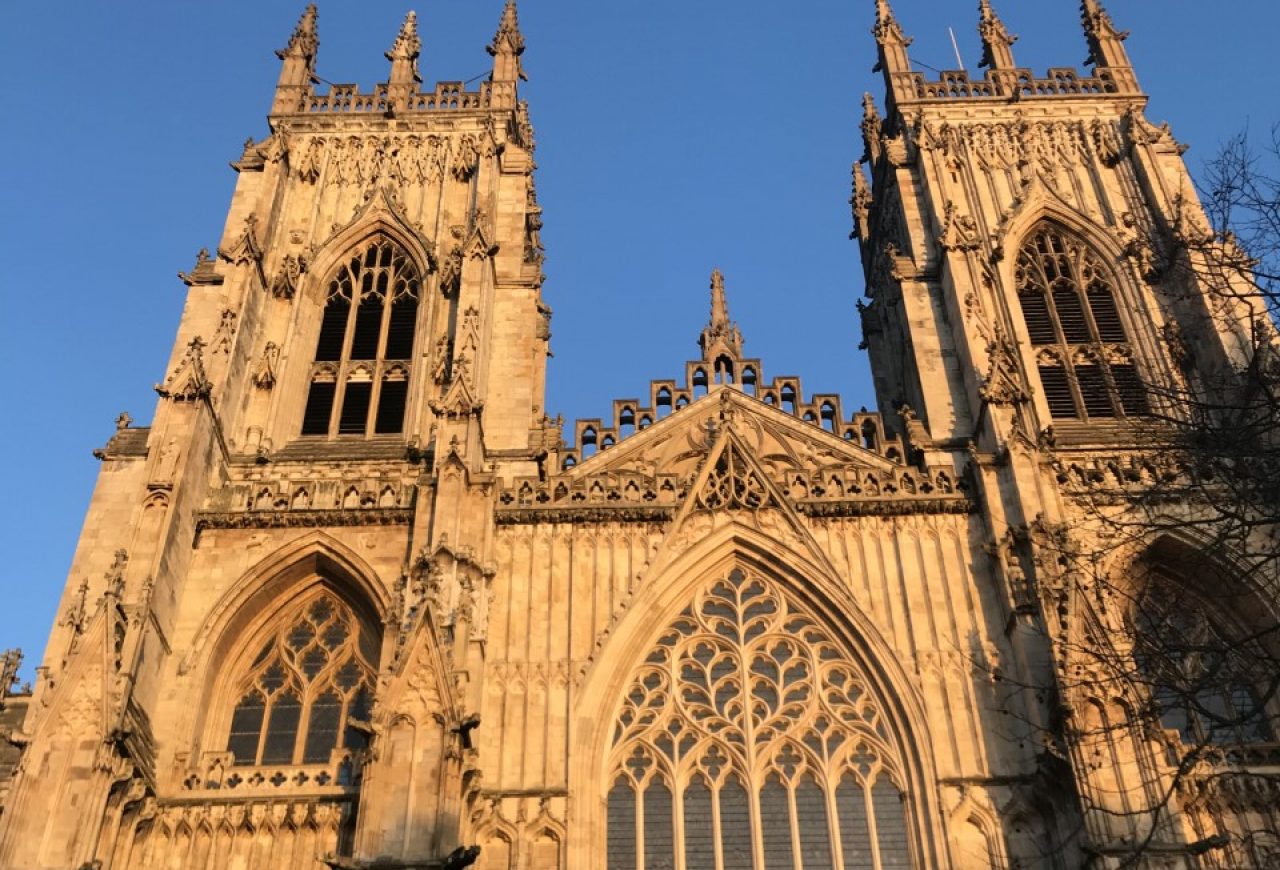As part of our Visible Past first-year module, students examine monasteries and castles through site visits to appreciate the impact of time, the environment around the buildings, and the make-up of the communities that lived there. Here, Byron Grierson reflects on the monastic experience of awe and isolation.
Upon arrival at Mount Grace Priory, it was immediately apparent just how secluded the monks were during the monastery’s age. Surrounded by trees and fields, it was easy to be transported and imagine how life would have been here centuries ago.
The most striking aspect of Mount Grace to me was the space allowed to the monks residing here. The word, “cell,” brings to mind images of a small area used to punish criminals. Here, this is certainly not the case. A reconstructed cell shows the space in which a monk would reside: a two-story cell with a separate bedroom, living room, prayer room, and a room upstairs devoted to activities such as clothmaking. On top of this, outside of the monk’s cell, you will find a garden which would have been used to grow various crops and flowers. Upon seeing this, it became more obvious to me as to why people would pay large sums of money to live here.
Another area which interested me was the bell tower. Constructed by Thomas Beauford in 1415, it remains a prominent feature of the monastery, even in its ruined state. Arguably, the bell tower is the best-preserved feature of Mount Grace, perhaps meaning Beauford was granted his wish of remaining part of the abbey’s legacy, even after its destruction.
It is difficult not to be impressed, or even overwhelmed, by the sheer size and splendour of Rievaulx Abbey. Built by the Cistercians in 1132, this monastery was clearly designed to be stunning in its appearance. It is not until seeing an Abbey like Rievaulx in person that you can truly understand why many were critical of the way Cistercians approached monastic life.
Like Mount Grace, Rievaulx Abbey is nestled away in the countryside, allowing for the monks of the time to live a solitary life. Despite this, there is still a feeling of community in the abbey. Rooms such as the refectory served as somewhat of a meeting point where monks would gather to eat. Another example of this is the Presbytery, which remains among the best preserved and visually awe-inspiring parts of the abbey. It is impossible to gain an understanding of the sheer beauty of this part of the abbey through the ruins alone. Pictures that present the abbey as it likely was before its destruction show a massive room with giant, beautiful windows which light up the area. This paints a particularly pleasant image of life at Rievaulx.
The differences between Mount Grace Priory and Rievaulx Abbey are vast, and it is clear why these two locations were chosen for this particular visit. Even lying in ruins, it is easy to imagine Rievaulx Abbey in its past splendour, and Mount Grace Priory, in its much more humble, yet still impressive, appearance prior to the dissolution. Both monasteries capture the visitor’s imagination, and areas such as the recreated cell at Mount Grace Priory effectively transport you to an age of past glory. In the case of Rievaulx Abbey, the building still inspires awe, despite its ruined state. The intricate attention to detail in every aspect of the building was particularly impressive, and the feeling of awe is immediately felt, even when viewing the abbey in the distance.










 With the Mount Grace’s grounds bathed in sunlight and not a drop of rain in sight it was only the temperature which left something to be desired. The ruins of the monastery still allowed us to imagine what life could have been like for both choir monks and lay brothers, even if the grounds were more noisy than they would have been in the days when it was inhabited. The areas restricted for the choir monks earn the priory’s title as the best preserved Carthusian priory in the country. The choir monk accommodation was far larger than I think most of us assumed it would be, with a private garden, writing space and toilet.
With the Mount Grace’s grounds bathed in sunlight and not a drop of rain in sight it was only the temperature which left something to be desired. The ruins of the monastery still allowed us to imagine what life could have been like for both choir monks and lay brothers, even if the grounds were more noisy than they would have been in the days when it was inhabited. The areas restricted for the choir monks earn the priory’s title as the best preserved Carthusian priory in the country. The choir monk accommodation was far larger than I think most of us assumed it would be, with a private garden, writing space and toilet.




